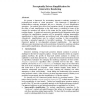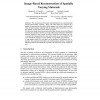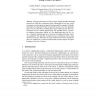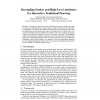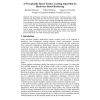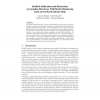RT
2001
Springer
14 years 6 months ago
2001
Springer
We present a framework for accelerating interactive rendering, grounded in psychophysical models of visual perception. This framework is applicable to multiresolution rendering te...
RT
2001
Springer
14 years 6 months ago
2001
Springer
The measurement of accurate material properties is an important step towards photorealistic rendering. Many real-world objects are composed of a number of materials that often show...
RT
2001
Springer
14 years 6 months ago
2001
Springer
This paper describes a novel from-region visibility algorithm, the unique properties of which allow conducting remote walkthroughs in very large virtual environments, without prepr...
RT
2001
Springer
14 years 6 months ago
2001
Springer
Opacity shadow maps approximate light transmittance inside a complex volume with a set of planar opacity maps. A volume made of standard primitives (points, lines, and polygons) i...
RT
2001
Springer
14 years 6 months ago
2001
Springer
We present an interactive system, which allows the user to produce drawings in a variety of traditional styles. It takes as input an image and performs semi-automatic tonal modelin...
RT
2001
Springer
14 years 6 months ago
2001
Springer
: The performance of hardware-based interactive rendering systems is often constrained by polygon fill rates and texture map capacity, rather than polygon count alone. We present a...
RT
2001
Springer
14 years 6 months ago
2001
Springer
We present a new conservative image-based occlusion culling method to increase the speed of hardware accelerated rendering of very complex general scenes which may consist of mill...
RT
2001
Springer
14 years 6 months ago
2001
Springer
This paper presents a technique for representing and displaying high dynamic-range texture maps (HDRTMs) using current graphics hardware. Dynamic range in real-world environments o...
RT
2001
Springer
14 years 6 months ago
2001
Springer
RT
2001
Springer
14 years 6 months ago
2001
Springer
We introduce hybrid rendering, a scheme that dynamically ray traces the local geometry of reflective and refractive objects, but approximates more distant geometry by hardwaresupp...
